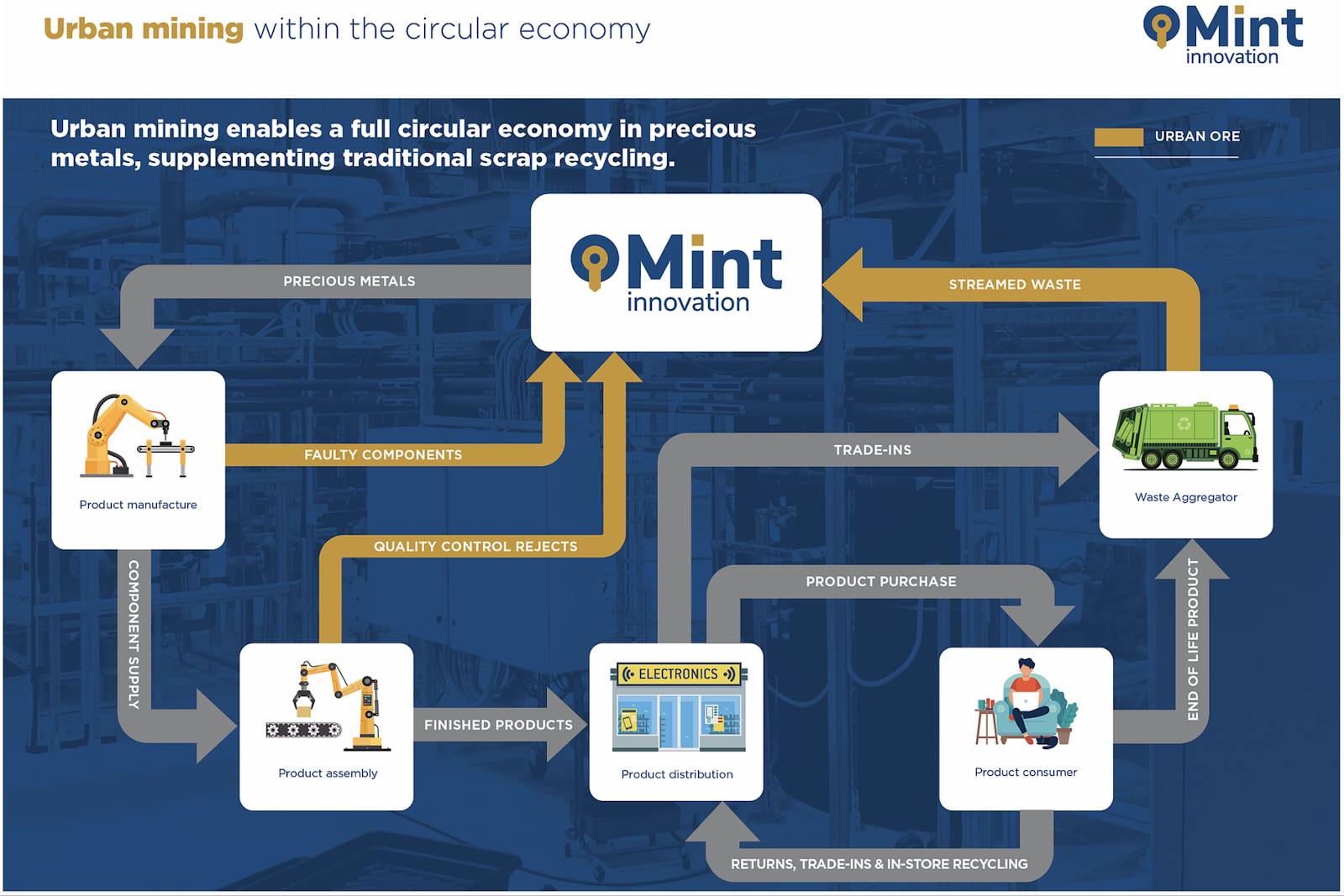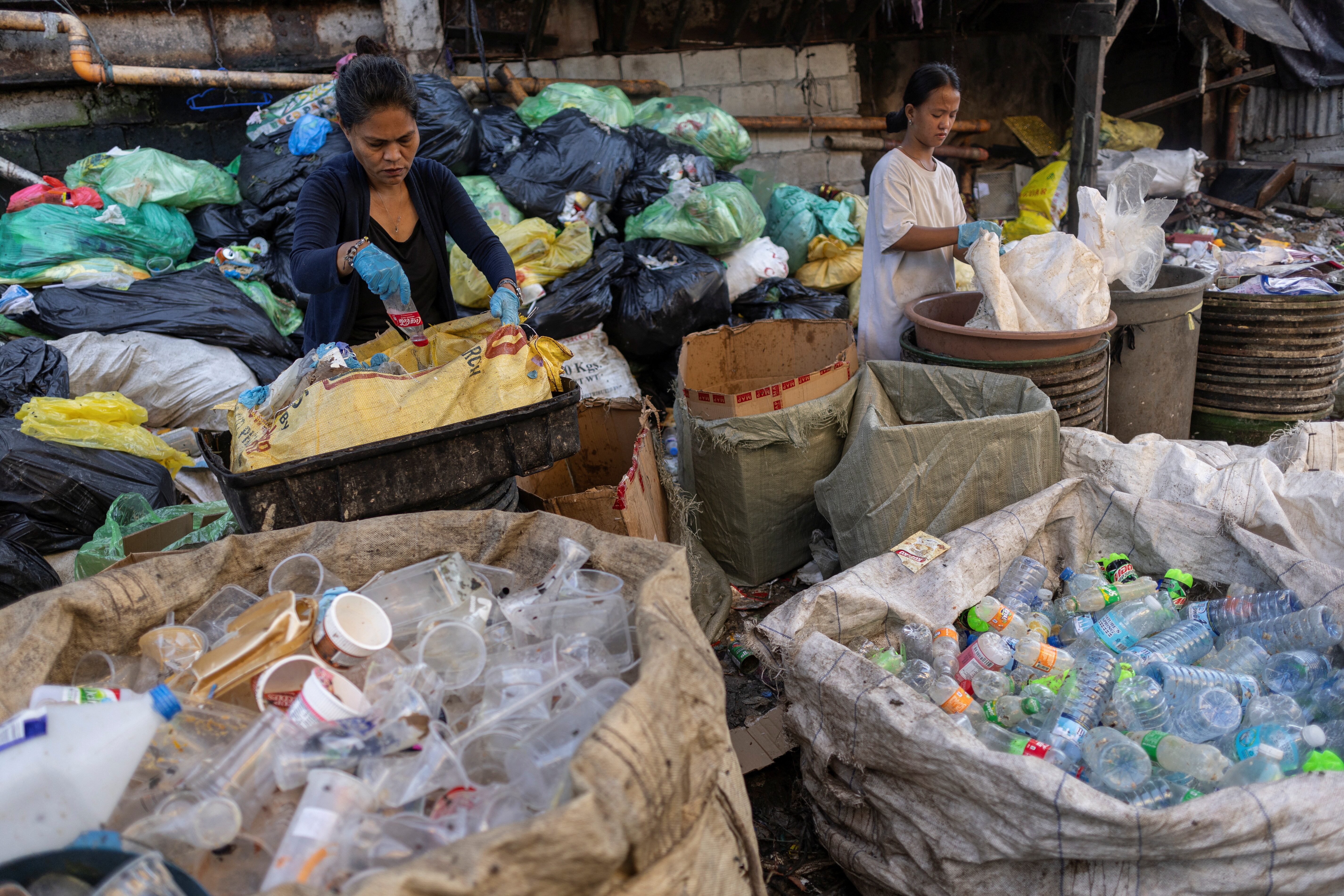This company recycles gold from electronic waste

Electronic waste should be further incorporated into the circular economy. Image: REUTERS/Eloisa Lopez
- Your old laptop could be reborn as a piece of jewellery or a new device.
- New Zealand startup Mint Innovation uses microbes and low cost chemicals to recover precious metals from e-waste.
- The vision is to have a biorefinery in every major city.
- The company is one of 17 in The Circulars Accelerator Cohort 2021.
Gadgets that we throw away, like cell phones and computers, are a rich source of precious metals.
A record 53.6 million tonnes of electronic waste was generated worldwide in 2019, according to the UN’s Global E-waste Monitor 2020. The raw materials in this e-waste were worth around $57 billion - with iron, copper, and gold contributing most to this value. But only a sixth of that value ($10 billion) is recovered in an environmentally sound way.
What if more of this precious waste could be sustainably salvaged and recycled back into the economy?
This is the vision of New Zealand start-up Mint Innovation, which has developed a low-cost, biotech process for recovering valuable metals from e-waste.

“Imagine the gold in your old laptop might end up as a ring on a person’s finger – or being reused in new devices,” says Mint Innovation chief executive Will Barker.
Using naturally sourced microbes and inexpensive chemicals, the company recovers precious metals from crushed and powdered electronic waste.
A mobile phone, for example, is made up of 15% copper and other compounds, 10% other metals and 3% iron, according to the World Economic Forum’s report, A New Circular Vision for Electronics, Time for a Global Reboot.
Urban mining
Mint’s vision is to have a biorefinery in every major city in the world. It has just raised NZ$20 million ($14 million) to help build its first two biorefineries in Sydney, Australia and North West England. The Sydney plant will be able to process up to 3,500 tonnes of electronic waste a year.
“Ideally those metals will be sold back to local businesses, such as jewellers and manufacturers, creating a truly circular economy,” Barker says.
Mint Innovation is one of 17 companies selected from more than 200 entrants to be part of The Circulars Accelerator Cohort 2021. The six-month programme helps circular innovators scale their solutions by connecting them to industry leaders and circular experts for tailored support and mentorship.
The accelerator is a collaboration with UpLink, the World Economic Forum’s innovation crowdsourcing platform, and is led by professional services company Accenture in partnership with Anglo American, Ecolab, and Schneider Electric.
The partners say the circular economy presents a unique market opportunity worth upwards of $4.5 trillion by 2030.
Circular solutions
By 2020, the number of devices connected to the internet was forecast to have been between 25 to 50 billion, according to the Forum’s A New Circular Vision for Electronics, Time for a Global Reboot, published in 2019 before the COVID-19 pandemic accelerated digital uptake.
It also estimated that, by 2040, carbon emissions from the production and use of electronics, including devices like PCs, laptops, monitors, smartphones and tablets (and their production) will reach 14% of total emissions.
What is the World Economic Forum doing about the circular economy?
“Globally, society only deals with 20% of e-waste appropriately and there is little data on what happens to the rest, which for the most part ends up in landfill, or is disposed of by informal workers in poor conditions,” the Forum says.
Changes in technology such as cloud computing and the internet of things – the world of connected devices – could hold the potential to “dematerialize” the electronics industry, the report finds.
Better product tracking and buy-back or return systems could lead to global circular value chains. Material efficiency, recycling infrastructure and increasing the use and quality of recycled materials are key.
UpLink, the World Economic Forum’s early-stage innovation initiative, is enabling and accelerating the purpose-driven entrepreneurs that are essential for a net-zero, nature-positive, and equitable future. To find out more and join the UpLink community, click here.
Don't miss any update on this topic
Create a free account and access your personalized content collection with our latest publications and analyses.
License and Republishing
World Economic Forum articles may be republished in accordance with the Creative Commons Attribution-NonCommercial-NoDerivatives 4.0 International Public License, and in accordance with our Terms of Use.
The views expressed in this article are those of the author alone and not the World Economic Forum.
Stay up to date:
UpLink
Forum Stories newsletter
Bringing you weekly curated insights and analysis on the global issues that matter.
More on Circular EconomySee all
Felipe Basso
November 13, 2025










